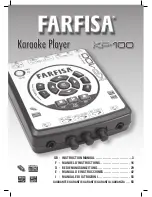
Design Guide for Hazardous / Industrial
Self-regulating trace heating systems
21-5400-7D0001/-
05/2023-EHT-466854
Notice Technical data subject to change without notice.
No claims for damage arising from alternations, errors or misprints shall be allowed.
Page 2 / 40
Overview
This manual covers the design and general installation of BARTEC Self-regulating trace heating systems for use in hazardous locations using the
following self-regulating heating cables, hereinafter called trace heaters:
BARTEC HSB+ (07-584B-*)
BARTEC HTSB (07-584C-*)
A trace heater unit comprises the power termination, a trace heater and an end termination. The trace heater unit can be made of a single trace
heater or multiple trace heaters connected by a splice or for a tee which are pre-determined by BARTEC.
The trace heating system consists of one or more trace heater units grouped by a common power termination; the junction box is pre-determined
by BARTEC as Installation Enclosure for trace heating. Each trace heating system is associated with design and installation documentation.
One or more trace heating systems can be merged by a common branch circuit to a heating circuit group with a joint over current device.
Optional components for temperature control or limitation and for annunciation can be included in the trace heating system.
Besides the components the system consists of rules for design and installation and it’s documentation.
The self-regulating trace heater features a temperature-dependent resistive element between two parallel copper conductors that regulates and
limits the heat output of the trace heater according to the workpiece temperature. If the workpiece temperature rises, the power output of the
trace heater is reduced. This self-regulating property prevents overheating which would cause damage to the trace heater. Even crossing or
overlapping with other trace heaters (or other portions of the same trace heater) are possible.
high power output
low temperature
high temperature
low power output
The trace heaters are fixed equipment heating systems for pipes in ordinary and hazardous areas. Thanks to the parallel design the trace heater
can be cut and installed to any required length (up to the maximum heating circuit length as shown on page 17).
Multiple options for connection, splicing and end termination of the heating circuit are available to meet the individual requirements on site. A large vari-
ety of accessories allows for easy customization and extensibility. The following illustration shows a typical electric trace heating system:
Power distribution
wiring(3
rd
party)
Transformer
Trace heater
Attachment tape
Warning label
Power distribution panel
(incl. ground fault protection)
End seal
Power termination kit
cold pipe warm pipe hot pipe





































